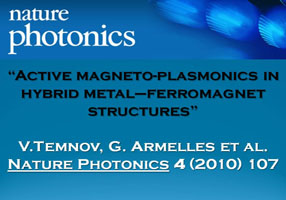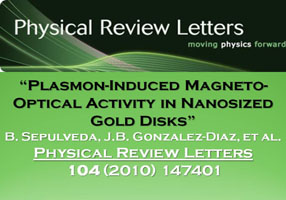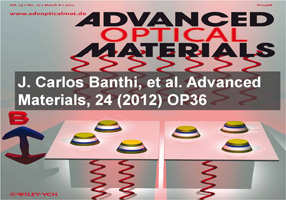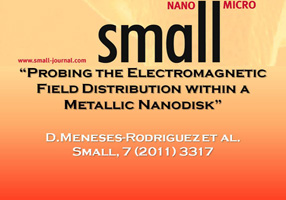Plasmon resonance effects on the MO activity of noble metal-ferromagnetic systems.
Plasmon resonance excitation in continuous layers and discrete elements produces an enhancement of the light electromagnetic field at the MO active element, yielding an enhanced MO activity, enhancement that can amount a factor of 150 in recent experiments carried out in Au/Ag/Co/Ag multilayered structures.
We have studied these effects in systems exhibiting both localized surface plasmon resonances (LSP) and propagating plasmon resonances (SPP), like:
- Ni nanowire arrays1.
- Au/Co/Au nanodiscs2.
- Au/Co/Au continuous films3.
- Au nanodiscs plus Au/Co/Au continuous films4.
In the first, simpler case, without a noble metal present in the structure, Ni simultaneously provides both the plasmonic and the MO properties. However, the poor plasmonic properties of Ni make the effect of plasmon excitation on the Mo properties to be weak. LSP resonances are excited in this case.
In the second case, combining a noble metal like Au and a ferromagnet like Co allows obtaining stronger effects in Au/Co/Au nanodiscs, where also LSP resonances are present, but the plasmonic characteristics are largely improved with respect to pure Ni wires.
The same effect can be observed in Au/Co/Au continuous films, where propagating plasmon resonances (surface plasmon polaritons or SPP) are excited instead.
Finally, it is possible to spatially separate the element responsible for the plasmon excitation and the counterpart responsible for the MO activity. This has been demonstrated in Au nanodiscs separated by Au/Co/Au continuous films with SiO2. In this case the plasmon resonaces can be excited at the Ay nanodiscs (LSP) while the MO activity occurs at the Co layer.






